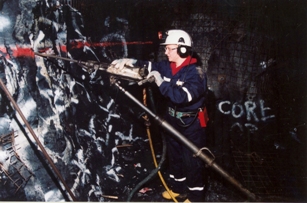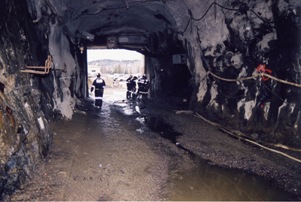 The Mining Industry Human Resources Council (MiHR), is undertaking a National Occupational Standards Project which will provide detailed essential skills profiles, core competencies and occupational standards for workers in underground mining, surface mining, and minerals processing.
The Mining Industry Human Resources Council (MiHR), is undertaking a National Occupational Standards Project which will provide detailed essential skills profiles, core competencies and occupational standards for workers in underground mining, surface mining, and minerals processing.
The Mining Companies and its stakeholders are moving forward together at unprecedented levels of collaboration in order to address the skilled workforce shortages. In 2008 we will see national standards start to emerge. Greater marketing and branding activities for mining as a high tech, dynamic industry will be launched.
Increasing awareness and tools to reach young people with the message that a career in mining is a worthwhile option will be enhanced. The number of students entering the skilled trades and technology programs will continue to grow as the positive message about mining and its global opportunities is dispersed.
Canadian companies and their employees are adopting a greater focus on life long learning. Mining is becoming more mechanized and automated, requiring higher level technical skills and the constant renewal of these skills as the technology changes. This is resulting in educational programming that responds to specific skill needs and creates multiple entry and exit points for students and current employees.
Life-long learning demands seamless transitions among educational institutions and between the educational institution and the workplace. Collaborations among educational institutions such as the Federated School of Mines are emerging to provide industry with an ease of access to the training expertise and graduates they need.
National boundaries are becoming meaningless in the world of electronic learning via the internet. The new generation of learners and workers has grown up in a technology rich environment. They expect information to be interactive and available anytime, anywhere.
 Post-secondary educational institutions will need to continue to find innovative models and flexible approaches to providing education and training in formats that respond to student expectations and meet industry needs for current and new employees. Modularization of curriculum, combined learn/work programs, the use of electronic media to develop learning competencies, practice in simulated environments will all become more common practices to enable anytime, anywhere learning.
Post-secondary educational institutions will need to continue to find innovative models and flexible approaches to providing education and training in formats that respond to student expectations and meet industry needs for current and new employees. Modularization of curriculum, combined learn/work programs, the use of electronic media to develop learning competencies, practice in simulated environments will all become more common practices to enable anytime, anywhere learning.
The workforce of 2008 and beyond expects to be engaged in the workplace decisions that affect them. They expect to be kept informed about the direction of their employer, and provided with the opportunities and tools they need in order to continue to grow personally and professionally as life long learners. The Canadian Mining Industry will need to become more accepting of the value the technologies and innovative education delivery tools bring if they are to successfully compete in a highly competitive market place.
While it is a time of great challenge, it is also a time of great opportunity. By collaborating locally, Canadian mining industry and the post secondary education institutions that serve them can develop expertise that will enable them to compete globally.
Sylvia Barnard is President of Cambrian College, located in Sudbury, Canada.
Visit her blog at: http://www.cambriancollege.ca/wordpress/























